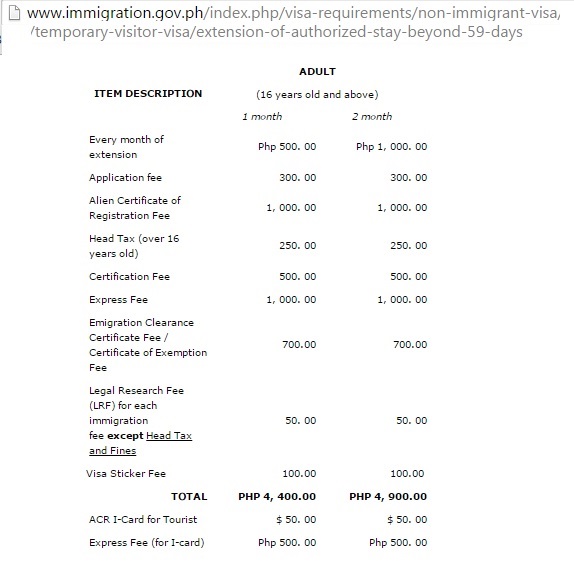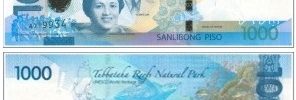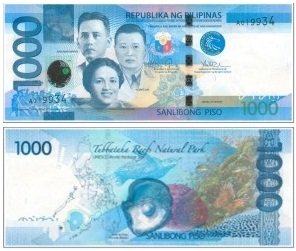How much is the Overstaying Fee for Tourists in the Philippines?
Most Tourists to the Philippines are allowed to stay for 30 days before needing to apply for a Visa. The first Tourist Visa extension is the initial extension of twenty-nine (29) days, taking the visit up to 59 days.
This is commonly followed by a two month extension, although some Bureau of Immigration offices allow a 6 month extension.
If a person stay in the Philippines without a Valid Visitor Visa, then penalties are applied, and added to the unpaid Visa fees.
These combined penalties and fees can add up over time and can be something like the following figures:
I have calculated the following approximate costs for overstay payments including Visa Fees, ACR cards and Penalties.
Pesos:
4,310 From One day to One Month Overstay (Updated Sept 2017)
6,000 Total for between One and Two Months Overstay (Updated July 2018)
13,000 Total for Up to Three Month Overstay
15,000 Total for Up to Four Month Overstay
17,000 Total for Up to Five Month Overstay
18,000 Total for Up to Six Months Overstay
20,000 Total for Up to Seven Month Overstay
22,000 Total for Up to Eight Month Overstay
24,000 Total for Up to Nine Month Overstay
26,000 Total for Up to Ten Month Overstay
28,000 Total for Up to Eleven Month Overstay
30,000 Total for Up to Twelve Months Overstay
60,000 Total for Up to Two Years Overstay
90,000 Total for Up to Three Years Overstay
120,000 Total for Up to Four Years Overstay
150,000 Total for Up to Five Years Overstay
180,000 Total for Up to Six Years Overstay
210,000 Total for Up to Seven Years Overstay
240,000 Total for Up to Eight Years Overstay
270,000 Total for Up to Nine Years Overstay
300,000 Total for Up to Ten Years Overstay
450,000 Total for Up to Fifteen Years Overstay
Note: These are approximate costs. Immigration will determine the exact cost when you visit their office.
A reasonable ‘estimate’ can be made by calculating 3,000 pesos for every month of Overstay. Or about 30,000 for each year.
These figures are approximate calculations based on 2016 fees. They may reduce the cost if they base it on the actual fees dues for older years, which may be less than the 2016 fees.
Charges can also be higher in some cases, such as one example in the comments below:
Pesos:
79,500 For a 19 months overstay.
Financial Penalties for Visa Overstay in the Philippines:
The minimum penalties appear to be:
- All Visa Extension Fees not previously paid.
- Fine for Overstaying – (additional) Php 500.00 per month
- Motion for Reconsideration for Overstaying – (additional) Php 500.00
I have read that the Overstay fee for just a few days would be about 4,000 pesos.
This would be the 3,030 peso first Visa Extension fee + Overstay Fees. (2015 fees)
If the Overstay is for over one month, but less than two months, then I would guess that the fee would be closer to 12,000 peso, made up as follows:
3,030 pesos – First Visa Extension fee
7,340 pesos – Next Visa Extension fee plus the ACR-i card fee
1,000 pesos – Fine for Overstaying (2 months)
500 pesos – Motion for Reconsideration for Overstaying
If the Overstay is for just over one year, then I would guess that the fee would be closer to 35,000 peso, PLUS possible DEPORTATION. The fee would be made up as follows (assume figures for 13 months):
3,030 pesos – First Visa Extension fee
22,490 pesos – Six x 2 month Visa Extension fees plus the ACR-i card fee
6,000 pesos – Fine for Overstaying (12 months)
500 pesos – Motion for Reconsideration for Overstaying
plus maybe one ACR-i card renewal fee
That is my guess, based on the actual costs for Normal Visas last year. If anyone has paid an Overstay Fee, please give details in the comments box below, showing the date and the fee paid and the total days overstayed. Thank you.
The Official Statement for Visa Extensions is:
Foreigners admitted under Section 9 (a) of the Philippine Immigration Act (PIA) of 1940, as amended, or Executive Order No. 408, as amended, may extend their authorized stay every two (2) months for a total stay of not more than:
– a) Twenty-four (24) months for visa-required nationals; and
– b) Thirty-six (36) months for non-visa required nationals.
The said periods shall be counted from the date of applicant’s latest recorded arrival.
Overstaying Foreigners in the Philippines
Foreigners who have overstayed for twelve (12) months or less but have been in the country beyond the maximum allowable period already may be permitted to update their stay with order to leave the country within fifteen (15) calendar days therefrom and their names may be included in the Bureau’s blacklist upon the discretion of the Commissioner; Provided that, the Commissioner, in the exercise of sound judgment, may allow such foreigners to update and extend their stay taking into consideration their Filipino lineage, medical condition, minority and other analogous circumstances.
Foreigners who have overstayed for more than twelve (12) months regardless if their stay is within the maximum allowable period or those found to be overstaying by virtue to a complaint or Mission Order regardless of the period shall be referred for deportation.
Sourced from: www.immigration.gov.ph/…/234-honorable-secretary
More stories on the Exit Clearance Certificate at:




